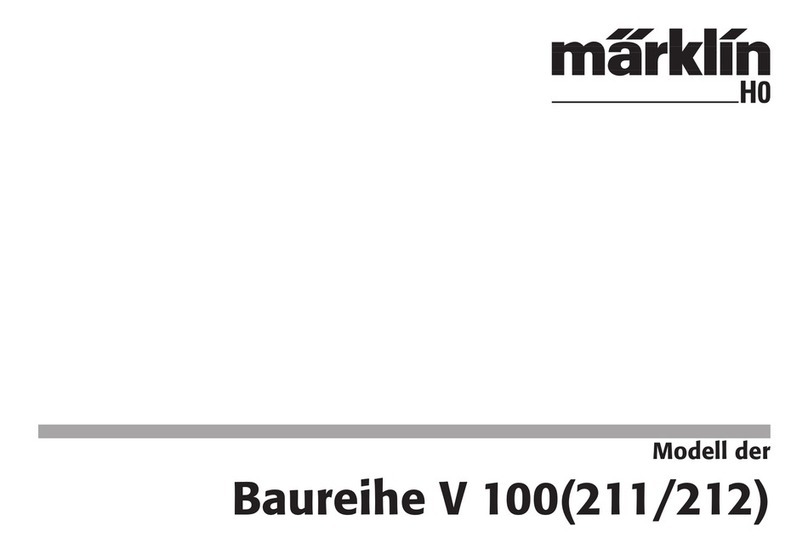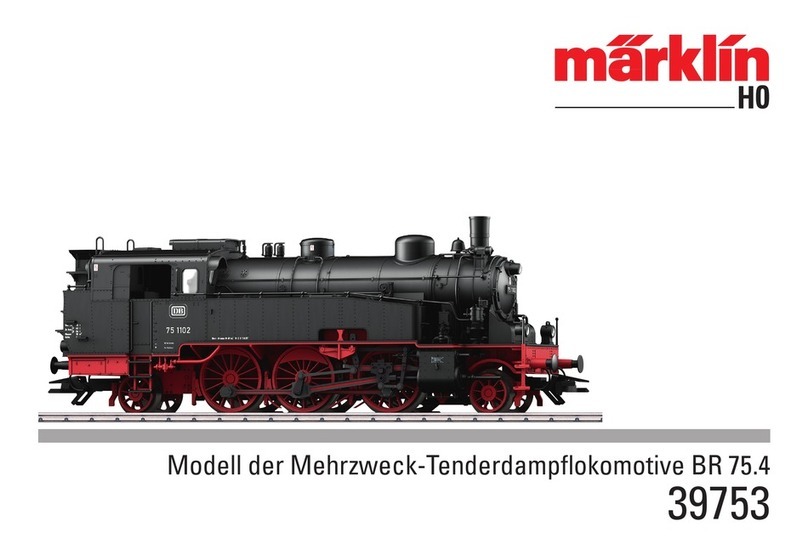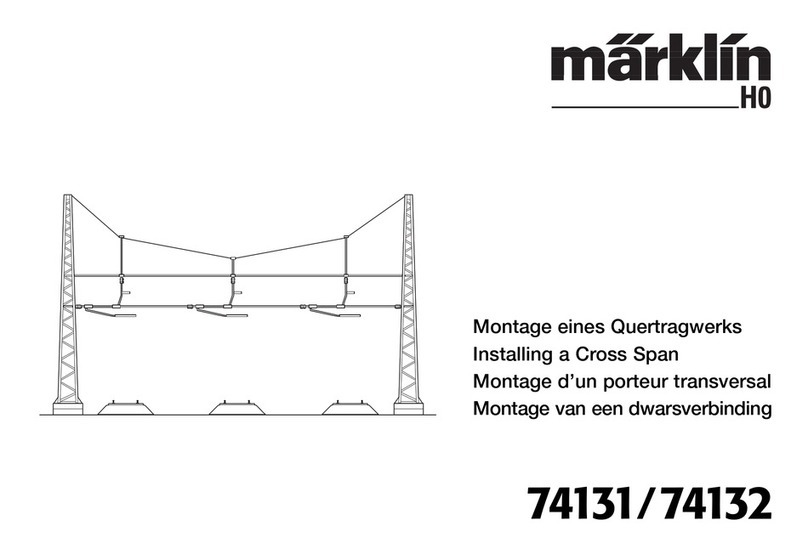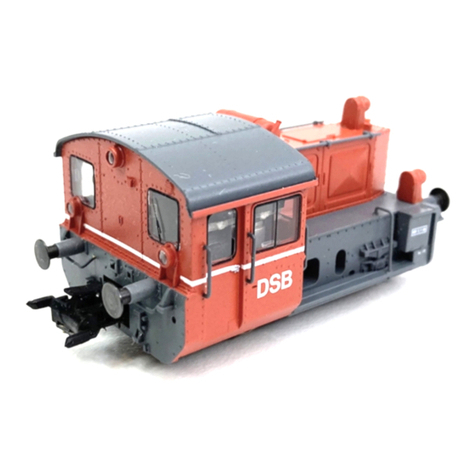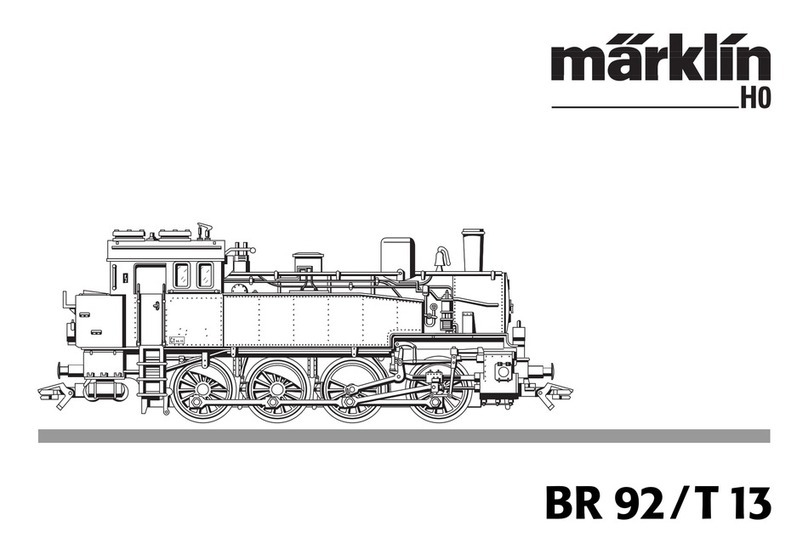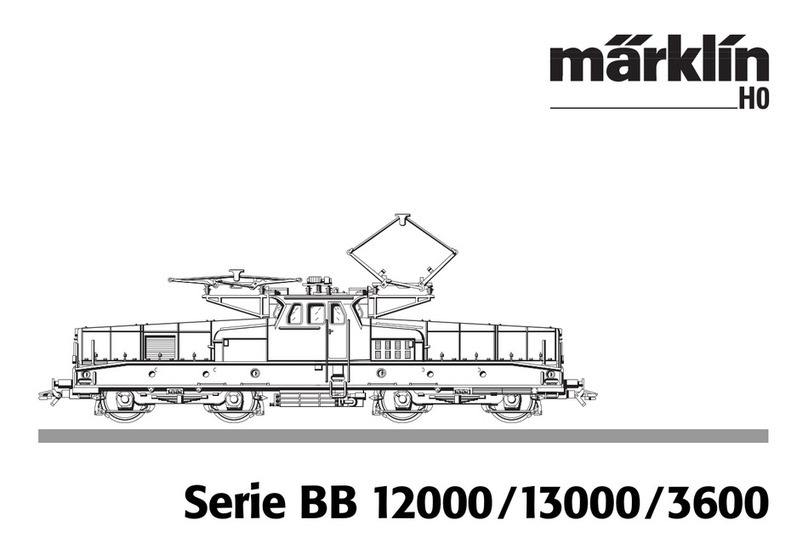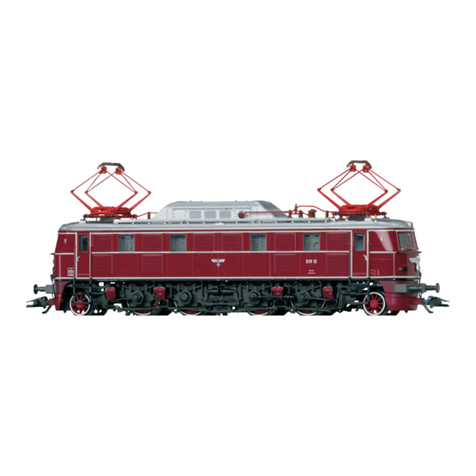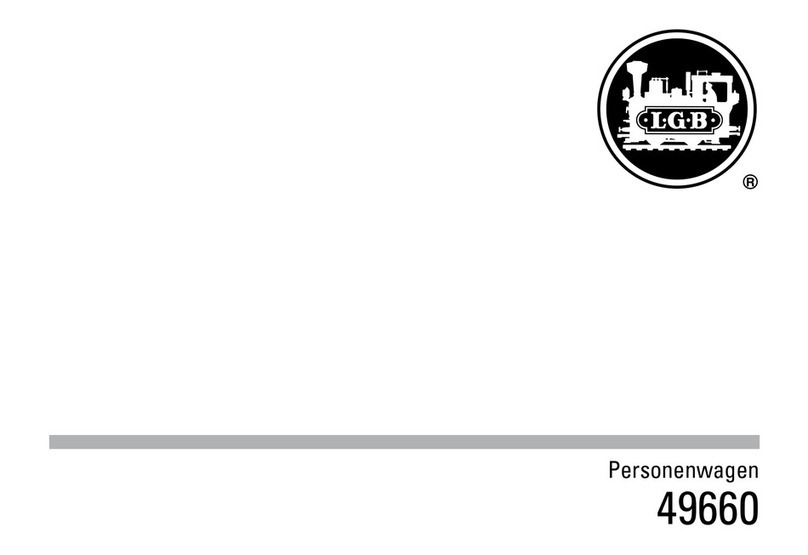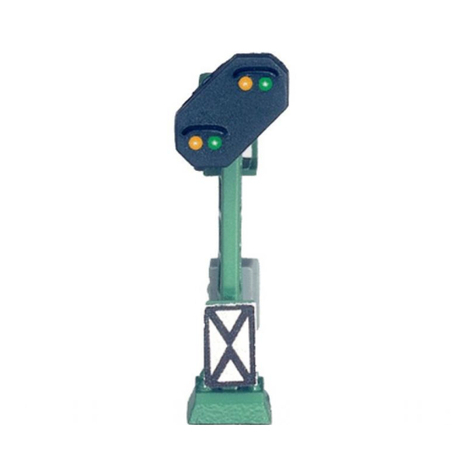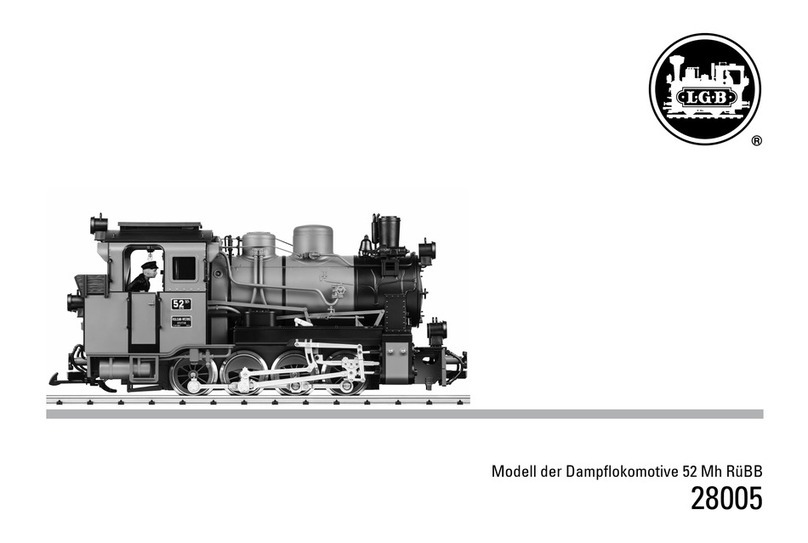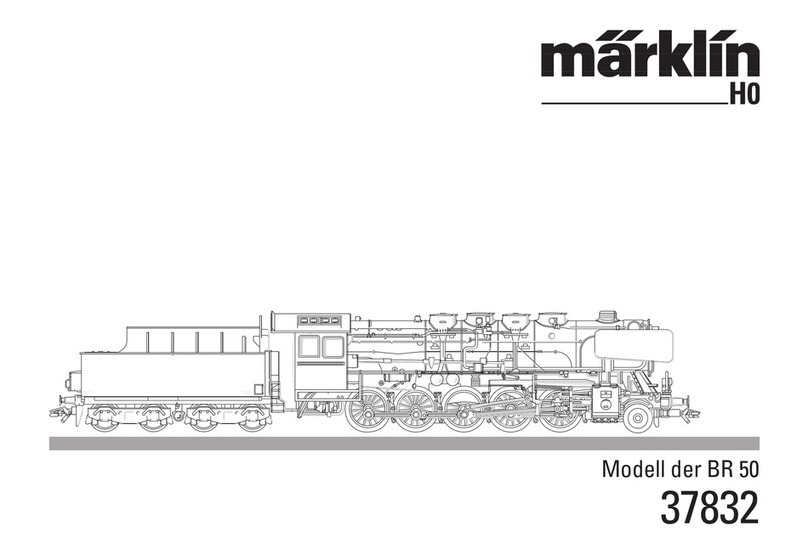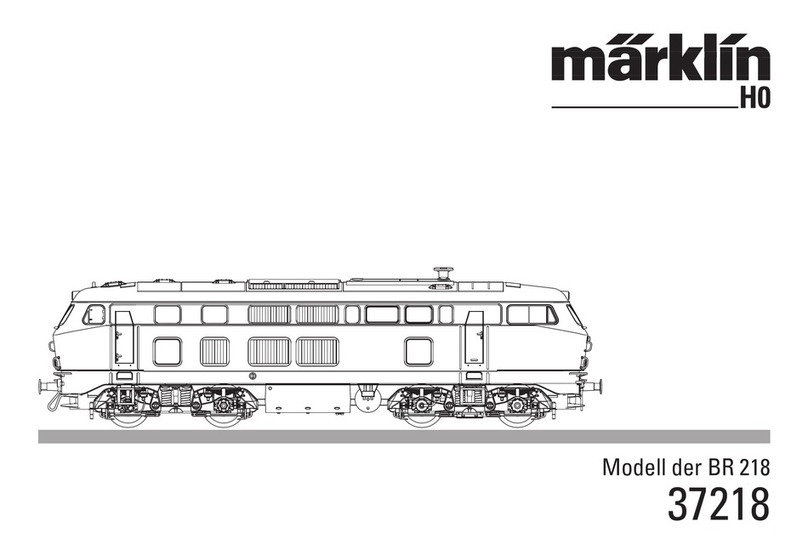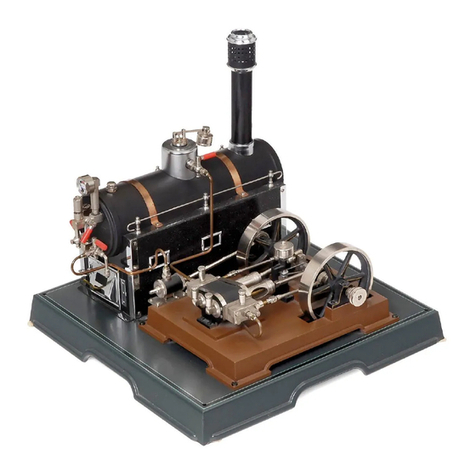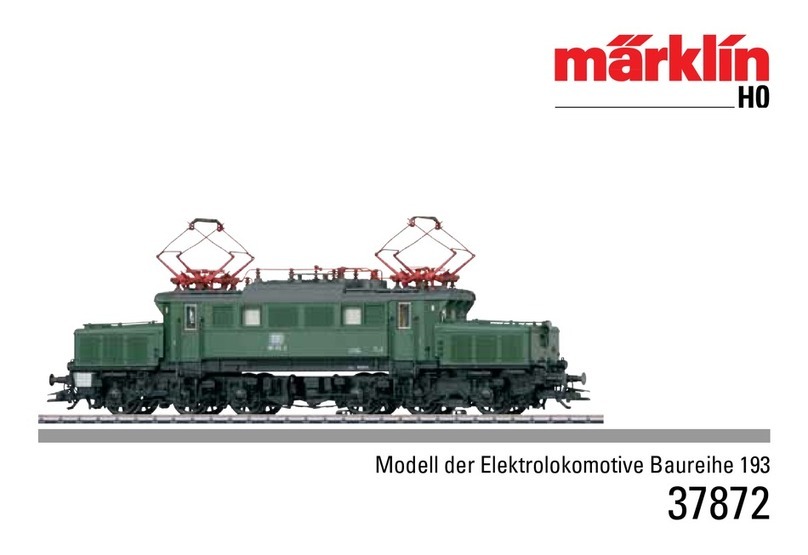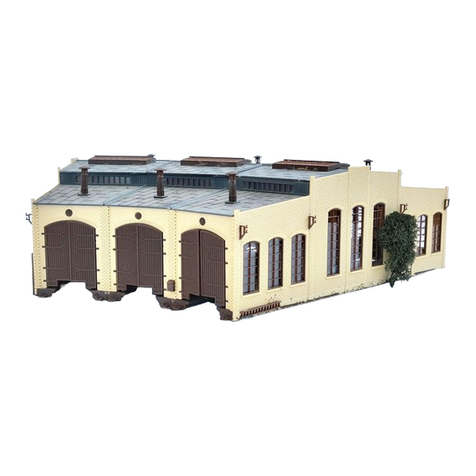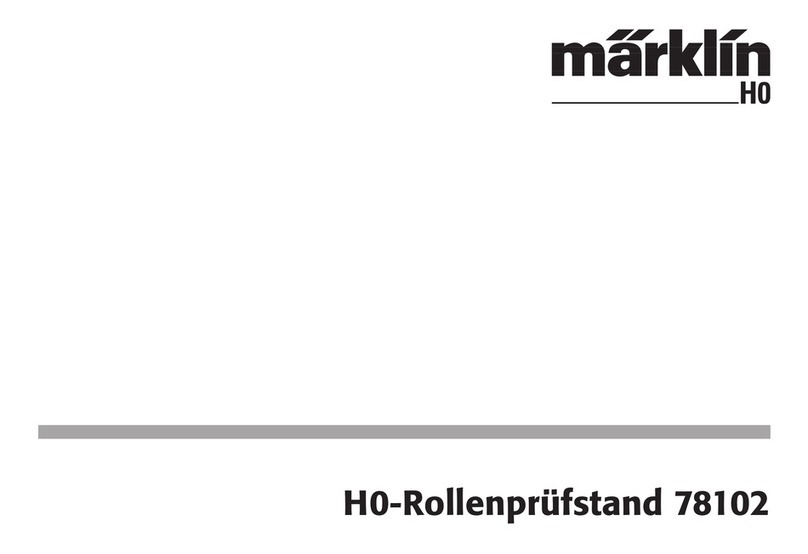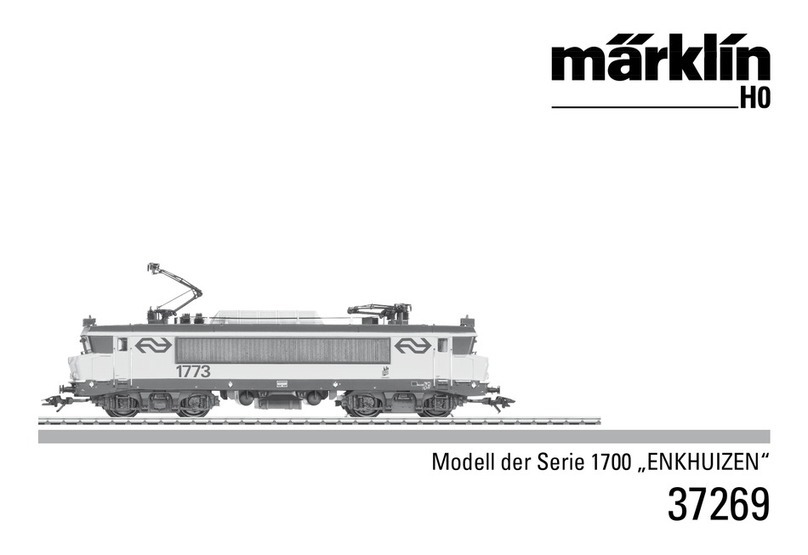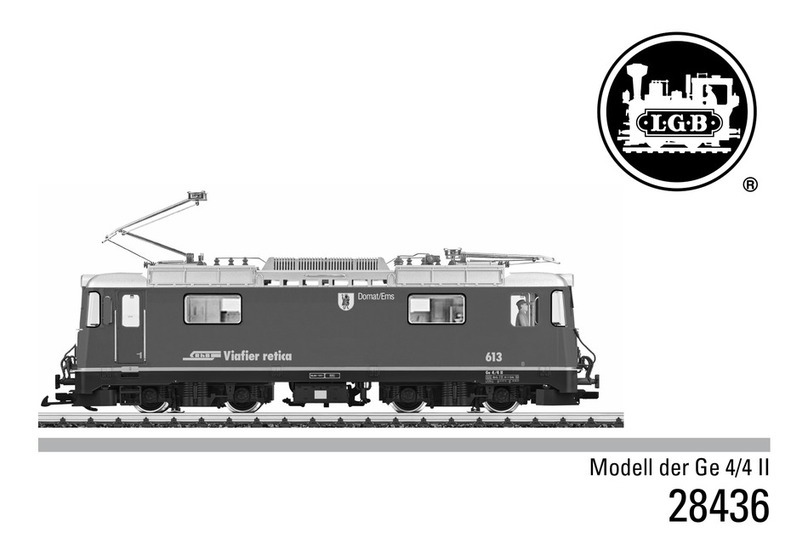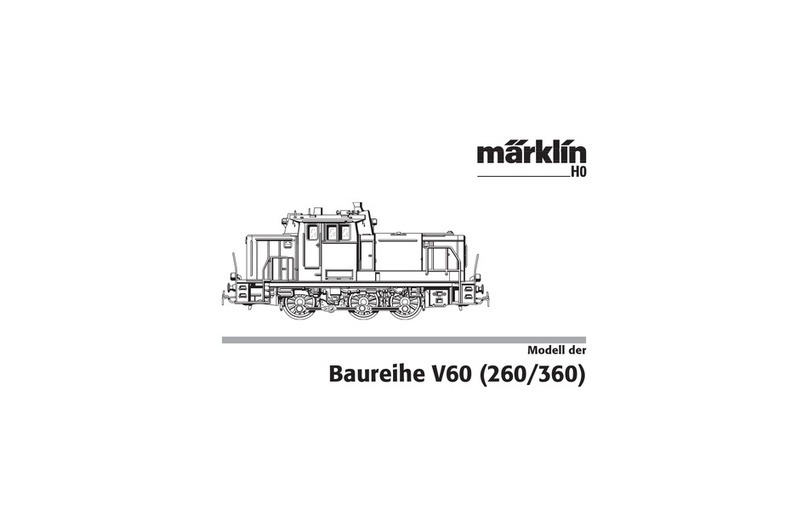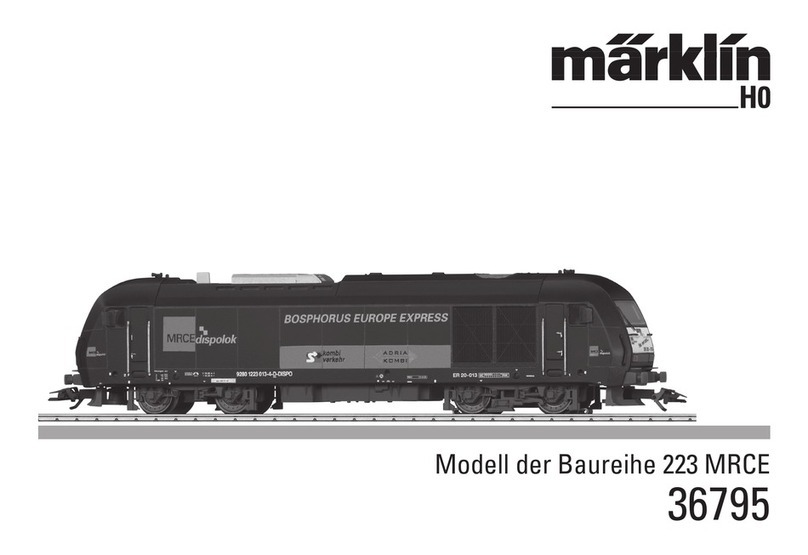
5
Vorbild • Prototype Exploitation dans le réelle • Grootbedrijf
Informations concernant la locomotive réelle
Conçue jadis, en 1911, pour accélérer le trafic voyageurs sur l‘île de
Rügen, la T 18 fut - avec sa construction symétrique à trois essieux
couplés, deux bogies, de grands réservoirs et une vitesse maximale de
100 km/h dans les deux sens - une des locomotives tender allemandes
les plus couronnées de succès. Elle avait une motorisation à deux
cylindres et vapeur surchauffée avec des cylindres disposés extéri-
eurement, à l‘horizontale entre les roues porteuses du bogie avant.
La transmission se faisait sur le deuxième essieu couplé et les bogies
avant et arrière avaient chacun 40 mm de jeu latéral. La T 18 était équi-
pée d‘un châssis robuste. Les désagréables tressaillements encore
présents sur le prototype de 1912 dès qu‘il franchissait la vitesse de
60 km/h purent rapidement être réduits grâce à un meilleur équilibrage
des masses. C‘est ainsi que la T 18 fut autorisée, en dépit du faible
diamètre de ses roues couplées, à rouler à 100 km/h.
Jusqu‘à 1927, la DRG incorpora dans son parc au total 460 T 18 prussi-
ennes (et de construction ultérieure) ainsi que 20 wurtembergeoises
immatriculées 78 001 à 282 et 351 à 528. S‘y ajoutèrent en 1935 les
machines sarroises (78 283 à 328). Après la nationalisation du chemin
de fer Eutin-Lübeck (ELE), la DRG reprit ses T 18 /les T 18 de celui-ci en
tant que 78 328 et 330. Environ 420 machines survécurent à la seconde
guerre mondiale dans les zones ouest. Après réforme des locomoti-
ves endommagées par la guerre, la DB enregistrait au 1er juillet 1950
finalement 377 unités en état de marche, avec encore 32 machines
supplémentaires des chemins de fer de la Sarre.
Informatie van het voorbeeld
In 1911 ontworpen voor een sneller verloop van het passagiersver-
keer op het eiland Rügen, ontstond met de T 18 in haar symmetrische
constructie met drie gekoppelde wielstellen, twee draaistellen, grote
voorraadreservoirs en een topsnelheid van 100 km/u in beide rijrichtin-
gen een van de succesvolste Duitse tenderlocomotieven. Ze bezat
een drijfwerk met twee cilinders aangedreven op stoom, met externe
cilinders die horizontaal tussen de loopwielstellen van het voorste
draaistel waren gemonteerd. De aandrijving vond plaats op het tweede
koppelingswielstel en er was telkens zowel ervoor als erachter een
tweeassig draaistel met 40 mm speling aan de zijkanten beschikbaar.
De T 18 had een robuuste frame. Dankzij een verbeterde massabalans
konden de lastige problemen die zich bij het prototype van 1912 nog
voordeden bij snelheden hoger dan 60 km/u gereduceerd worden.
Hierdoor werd de T 18 ondanks haar relatief geringe doorsnede van de
koppelingswielen van 1.650 mm voor 100 km/u toegelaten.
De DRG had tot 1927 in totaal 460 Pruisische (en replica‘s ervan) en 20
Württembergse T 18 als 78 001-282 en 351-528 aan haar bestand toe-
gevoegd. In 1935 kwamen daar de Saar-machines (78 283-328) bij. Na
de nationalisering van de Eutin-Lübecker Eisenbahn (ELE) in 1941 nam
de DRG hun T 18 als 78 329 en 330 over. In de westelijke zone overleef-
den nog 420 machines het einde van de tweede wereldoorlog. Na de
buitenbedrijfstelling van de locomotieven die in de oorlog beschadigd
waren geraakt, voegde de DB tot 1 juli 1950 uiteindelijk 377 bedrijfs-
klare exemplaren aan haar boeken toe, plus nog 32 machines van de
spoorwegen in Saarland.
